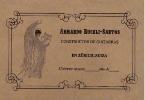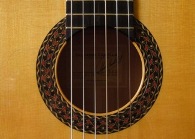Welcome to one of the most active flamenco sites on the Internet. Guests can read most posts but if you want to participate click here to register.
This site is dedicated to the memory of Paco de Lucía, Ron Mitchell, Guy Williams, Linda Elvira, Philip John Lee, Craig Eros, Ben Woods, David Serva and Tom Blackshear who went ahead of us.
We receive 12,200 visitors a month from 200 countries and 1.7 million page impressions a year. To advertise on this site please contact us.
|

|
|
[Deleted]
|
You are logged in as Guest
|
|
Users viewing this topic: none
|
|
Login  | |
|

   
Armando
Posts: 302
Joined: May 27 2005
From: Zürich, Switzerland

|
 RE: How to build a guitar resistant ... (in reply to Guest) RE: How to build a guitar resistant ... (in reply to Guest)
|
|
|
Hi rumbaking
I remember a similar previous tread about that topic and there was another member from Florida saying that he doesn't have any problems with humidity at all. He even wrote that he playes sometimes in the rain and his instrument doesn't suffer as long as he slowly dries it afterwards.
Honestly that's hard to believe though, but the vulnerability of the instrument depends to a great extend on the humidity conditions in which it was built, but also on the type of woods used.
First of all i think that it makes no sense to build a guitar with artificially moisty woods just in order to prevent deformation of the parts. A guitar built in such a manner would most probably sound mute, with little sustain and little overtones. On top of that it could never be brought outside of that climate without risking total damage.
However there are some guitarmakers in countries with tropical climate who have no option as the humidity is permanently high. Guitarmakers such as for instance those in Paracho (Mexico) have to build in such climates, but the thing is, 99% of them are building guitars fot the local market only, so their instruments will never be used in a different environment as they were built.
I know from some cuban makers that they build whole guitars with spanish cedar including the soundboard. I don't say that this is the best material for a guitar, but it is probably the best wood for a guitar played and stored in Cuba. Cedar is easy optainable for them and it resists humidity and it's very stable in terms of warping, shrinking etc.. and if produces a typical sound which is common on cuban guitars.
On the other hand i also know of some makers with a higher ambitions, that they have moved away from their homecountries to countries with drier climate just because they were not satisfied with the results of their guitars, due to the humidity problem. One example for that was the Puerto Rican luthier Manuel Velazquez who moved to New York in order to build under better conditions.
Generally speaking we know that indian rosewood backs and sides combined with either a redwood or a western red cedar top is relatively good combination for a guitar used in a humid environment, whereas spruce is very vulnerable to excessive air humidity.
I have never heard that guitar luthiers prepare their guitars inside the soundbox in order to prevent humidity to pentrate the wood. Nevertheless i know that some Violin Luthiers such as Stradivari and Guarneri used some special anti-fungal and anti-ageing mixtures on the wood used on their violins. It has been proven, that their instruments are in much better shape today than those made by other luthiers of their times due to the use of a very effective wood protecing primer. Basically such a primer could be used on guitars as well, but i think a varnish on the inside of the soundbox would drastically change the tone of the guitar to the worse, so i'd never do that.
So my conclusion is: Get a nice Indian/Cedar negra, don't store it in a closed room and you would most probably never get serious problems.
Saludos
Armando
_____________________________
|
|
|
|
REPORT THIS POST AS INAPPROPRIATE |
Date Jan. 5 2012 21:53:20
 |
|

   
Richard Jernigan
Posts: 3430
Joined: Jan. 20 2004
From: Austin, Texas USA

|
 RE: How to build a guitar resistant ... (in reply to Guest) RE: How to build a guitar resistant ... (in reply to Guest)
|
|
|
I lived for 18 1/2 years on the Central Pacific island of Kwajalein in the Marshall Islands. Two guitars were with me the whole time, a cedar/cypress 1967 1a Ramirez blanca and a 1991 Manuel Contreras Sr. spruce/Brazilian doble tapa.
Two other guitars lived with me there for 8 years or more, a 1972 spruce/cypress Arcangel Fernandez and a 1973 spruce/Indian Jose Romanillos.
I lived in an apartment building with a poorly designed central air conditioning system. The only thing I could control was temperature. I kept it at about 77 F (25 C) for a couple of reasons. I didn't like a big contrast between the outdoor temperature (76-86 F, 24.4-30 C) and the indoor. And the higher the temperature, the lower the relative humidity. Outdoor relative humidity was seldom below 90%.
I kept a well calibrated hygrometer in the apartment. It stayed almost constant at 66%. I saw no problems with the guitars. I would think that if you lived in a reasonably well designed air conditioned environment in Florida, you could maintain the same humidity level or lower. Traveling for a few hours with the guitar in any decent case shouldn't present a problem.
I have been back in Austin, Texas for two years now. The guitars have adjusted to the local humidity without problems. I did keep Oasis humidifiers in the airtight flight cases for the first year or so, but I have become less religious about keeping them topped up.
Typically it gets down to the 20s F (-7 C) in Austin for several days each year in January and February. In the winter I keep the house at 68 F (20 C). I haven't seen any ill effects on the instruments.
The Ramirez has been pretty well all over the world. It has more than a million airline miles on it, all in airtight, reasonably well insulated flight cases. It's been in a lot of airplane holds and in humidity environments all across the scale, in its Reuer and Mark Leaf cases. The only precautions I have taken are to give the instrument plenty of time to stabilize to ambient temperature before opening the case, and not letting it stay in extremes of heat or humidity for extended periods. But cedar is well known to be more stable under changes of temperature and humidity than spruce.
My Romanillos is in much better shape than Julian Bream's, which was made just after it. Bream's had to have the Brazilian back replaced twice. As far as I know the top never cracked, but a Hauser he had did crack while he drove over the Alps to an engagement in Italy.
Bream was notoriously hard on guitars. I picked him up at the Austin airport a couple of times when he played here, and the guitar was in a plain archtop plywood case. All the same, a concert artist's guitar is likely to face far more challenges than an amateur's.
RNJ
|
|
|
|
REPORT THIS POST AS INAPPROPRIATE |
Date Jan. 5 2012 23:45:46
 |
|

   
Shawn Brock
Posts: 271
Joined: Sep. 19 2011
From: Louisville KY

|
 RE: How to build a guitar resistant ... (in reply to Guest) RE: How to build a guitar resistant ... (in reply to Guest)
|
|
|
I'm with John Shelton on this, it does seem like Peter will have a cold gig building this one... I'm sure you'll be happy with Peter's work Rumbaking. I bet your excited as hell! He now has a 16 month wait, and if you endured that, your probably itching pretty good by now. The all important question here is, what is the 3rd guitar you have a deposit on?
I have witnessed the phenomena of guitars sounding the best in the climate they were built in, but don't consider it to be 100 percent fact. Being that I live in the desert and travel all over the world, I have tested this theory many times with many guitars. For some it was true, while others didn't seemed to be greatly affected by swings in humidity levels. Why its true for some and not for others I don't know. Perhaps several factors determine if a guitar will be affected in addition to the woods used, (cedar or spruce soundboards, rosewood or other species for back and sides.) It seems that the obvious factors would be the thickness of the top, back and sides, how the guitar is braced, and what type of finish it has, (French Polish or Lacquer), and how much is applied... And as someone already said, if the guitar is finished on the inside. The only guitars which I have played that were finished on the inside were some of the lattice braced concoctions, which I don't care for anyhow...
Its my personal opinion that a good guitar is just that, a good guitar, and a good guitar always sounds good no matter what the humidity level is. Though some behave better at certain levels... Of course, what the level of humidity does to the structure of the instrument is another story. It seems that my most common experience is that the guitar needs a period of adjustment when it travels. If I just have the guitar in a different environment for a day or 2 the change is hardly noticeable, but if the guitar is in a new environment for a week or so, then it will have a few days where it just don't sound quite its best. Maybe to play it on the safe side you should move to Portland... LOL
|
|
|
|
REPORT THIS POST AS INAPPROPRIATE |
Date Jan. 7 2012 17:48:34
 |
|

   
Shawn Brock
Posts: 271
Joined: Sep. 19 2011
From: Louisville KY

|
 RE: How to build a guitar resistant ... (in reply to Guest) RE: How to build a guitar resistant ... (in reply to Guest)
|
|
|
|
Boy Rumbaking... That's a tough question. Perhaps the better question is what wouldn't I get if getting a negra. Though its not quite as common, I think mahogany makes a good negra. I also think that Padauk would be a good option or Black Acacia. You may want to bring Black Acacia up to Peter or Stephen Faulk as I know they both have a good bit of experience with it. I'm so hooked on different sounds that I would need 5 or more guitars from great builders to have everything I ever wanted... My heart beats quickest with a good blanca, and I like both spruce and cedar tops. So I need those 2... Then I need a negra that would be somewhat close to a blanca, and for that I would probably have to go with Palo Escrito, just because you'll get less sustain than with East Indian... Then I would want a touch more sustain than the Palo Escrito would offer, and I would be right where you are. At that point I would probably debate between Black Acacia, Mahogany and Padauk, but may end up with Padauk or Black Acacia... If I were to go with Mahogany or Padauk, I would be in favor of a Cedar top for some reason. Cedar and Mahogany seems to give some good mellow tones, but it can still have a lot of presents in the mid range. After all, that's what's needed in great flamencos. So many times people confuse a great guitar with a great flamenco guitar. You'll hear how great someone's flamenco guitar is, and when you pick it up and strum a chord, you want to switch it over to your left knee and strike the classical pose. To me anyway, a good flamenco has to be exaggerated a little in its mid range... But that's another subject. Study Black Acacia for a bit and see what you think. Peter is a frigging artist, and he'll bring it to life for you! I'm pretty much over the idea of BRW and EIRW, but that's what I say this week. Next week I may be willing to order East Indian again, but not BRW... To me the price difference is just to high for the return on sound. Nothing wrong with it, I just never had that special feeling that some get when they play it...
|
|
|
|
REPORT THIS POST AS INAPPROPRIATE |
Date Jan. 9 2012 18:07:54
 |
|

   
Shawn Brock
Posts: 271
Joined: Sep. 19 2011
From: Louisville KY

|
 RE: How to build a guitar resistant ... (in reply to Guest) RE: How to build a guitar resistant ... (in reply to Guest)
|
|
|
Well... Right now I have 11 guitars, but I'm quite sure you were asking about flamencos, and the answer to that is 4. Lets cut that to 3, cause 1 of them is a Cordoba GK Studio that I bought for plugging in at gigs, and I'm not sure that I would hands down call those guitars flamencos. Interestingly enough all I have are blancas. A 1960 Ramirez, a 2008 Castillo with a cedar top and a 2008 Navarro. I will be back in the action again before long though, just as soon as I get this Ramirez and Navarro sold... I had the Ramirez sold, but the guy never could get his money together, now I have another serious buyer, so hopefully it won't be long. I had a 94 Conde negra that I wish I hadn't let go of, but that's that...
I have been pondering what I want next and just can't decide on either the maker I want, or negra or blanca. Truthfully I need 2 more good guitars, a good spruce blanca and a negra. Its just the question of what I want first, because my old lady will have a fit if more guitars are coming into the house than are going out. I used to do a lot of trading and selling of high end steel string guitars, and then classicals, and finely I woke up and have found my love in flamenco. Its one of those, to know where you are going, you have to know where you came from, kind of moments. I don't want to follow the musical trends anymore, I want to recapture what was, and the hell with the future.
I have a feeling that when I have money in my hand from the sale of this Ramirez, I'll know what I want, and from whom I want it from and I'll just order it. Then the game will begin again... I can tell you one thing for sure about my future guitars, I'll be going with pegs or Planetary Pegs, everything else is still up in the air...
Its to bad that the world don't have a "flamenco guitar library", where you could check guitars out for a while and take them back. There are so many makers who I believe are way ahead of the game, but you can't hardly play anything they have built unless you order it.
By the way, are you ordering your negra from Peter as well, or are you still deciding who to go with?
|
|
|
|
REPORT THIS POST AS INAPPROPRIATE |
Date Jan. 9 2012 22:10:53
 |
|
 New Messages New Messages |
 No New Messages No New Messages |
 Hot Topic w/ New Messages Hot Topic w/ New Messages |
 Hot Topic w/o New Messages Hot Topic w/o New Messages |
 Locked w/ New Messages Locked w/ New Messages |
 Locked w/o New Messages Locked w/o New Messages |
|
 Post New Thread
Post New Thread
 Reply to Message
Reply to Message
 Post New Poll
Post New Poll
 Submit Vote
Submit Vote
 Delete My Own Post
Delete My Own Post
 Delete My Own Thread
Delete My Own Thread
 Rate Posts
Rate Posts
|
|
|
Forum Software powered by ASP Playground Advanced Edition 2.0.5
Copyright © 2000 - 2003 ASPPlayground.NET |
7.763672E-02 secs.
|


 Printable Version
Printable Version
















 New Messages
New Messages No New Messages
No New Messages Hot Topic w/ New Messages
Hot Topic w/ New Messages Hot Topic w/o New Messages
Hot Topic w/o New Messages Locked w/ New Messages
Locked w/ New Messages Locked w/o New Messages
Locked w/o New Messages Post New Thread
Post New Thread